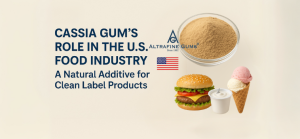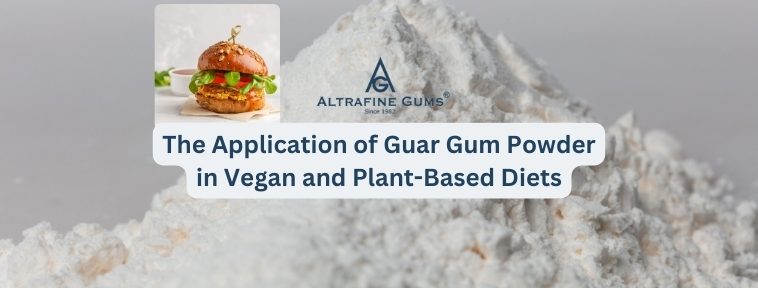
The Application of Guar Gum Powder in Vegan and Plant-Based Diets
Table of Contents
Guar Gum, a lesser-known ingredient in the culinary world, has been gaining popularity among those following vegan and plant-based diets. This versatile natural thickening agent, derived from guar beans, offers a wide range of applications in vegan and plant-based cooking. In this article, we will explore the various ways guar gum powder can be used in these diets, its benefits, potential side effects, and how it compares to other thickeners.
What is Guar Gum?
Guar gum, also known as guaran, is a white powder extracted from the seeds of the guar plant (Cyamopsis tetragonoloba), which is native to India and Pakistan. It has been used for centuries in traditional Indian cooking and as a binding and thickening agent in various food products. Guar gum is a soluble dietary fiber and is known for its remarkable water-holding capacity.
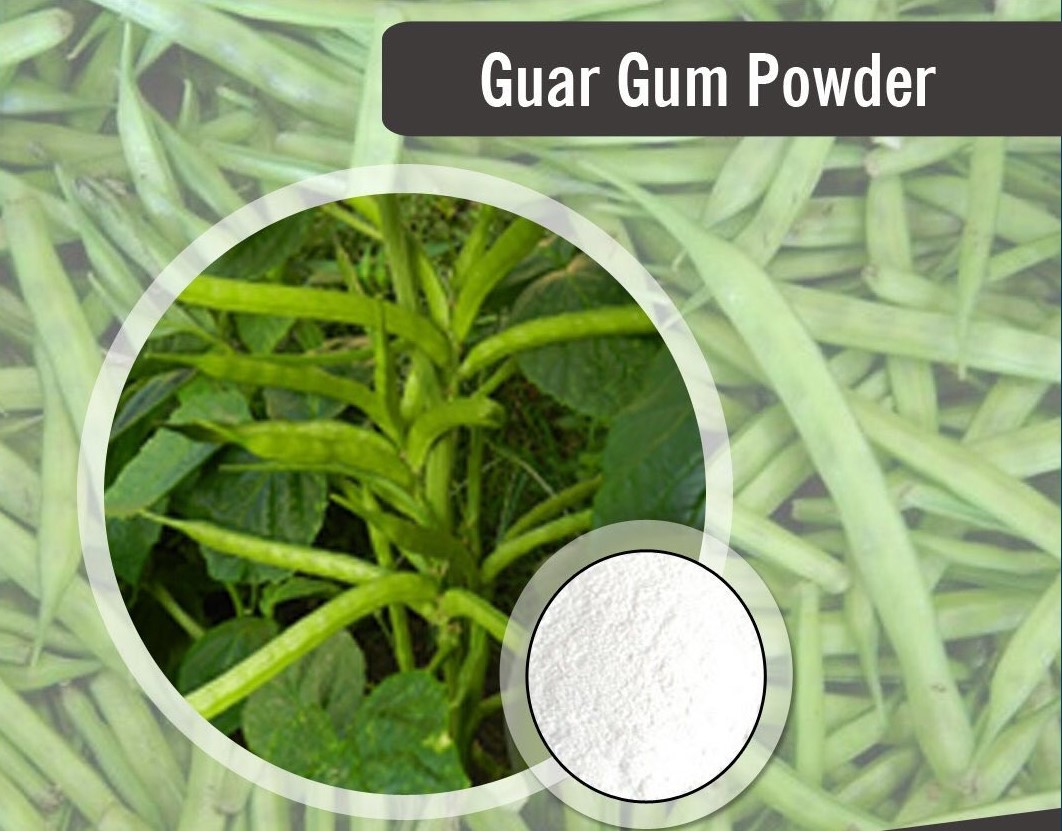
Guar Gum in Vegan and Plant-Based Diets
Improves Texture and Consistency
One of the primary reasons guar gum is used in vegan cooking is its ability to improve the texture and consistency of various dishes. When added to sauces, soups, or stews, guar gum prevents the separation of ingredients and gives the final product a smoother and more appealing texture.
Acts as a Thickening Agent
Guar gum is an excellent thickening agent, making it a valuable addition to vegan recipes. It helps achieve the desired thickness in gravies, puddings, and custards without the need for eggs or dairy products.
Enhances Creaminess
In vegan ice cream and desserts, guar gum is often used to enhance creaminess. It prevents the formation of ice crystals and ensures a velvety, indulgent texture, making it a go-to ingredient for vegan dessert enthusiasts.
Guar Gum in Gluten-Free Baking
For those following a gluten-free vegan diet, guar gum is a lifesaver. It acts as a gluten replacement, providing elasticity and structure to baked goods, resulting in fluffy bread and moist cakes.
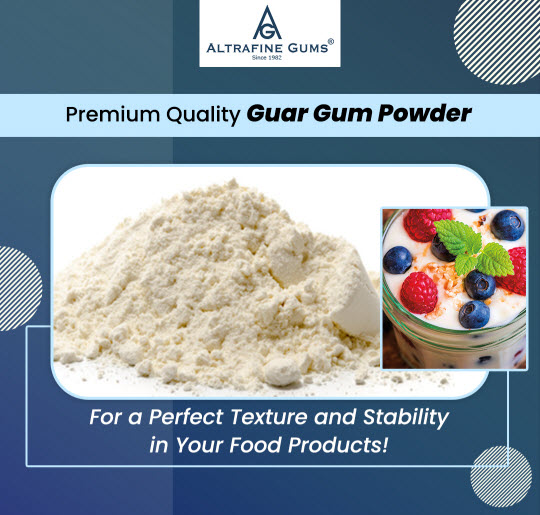
Using Guar Gum in Smoothies
In the world of plant-based smoothies, guar gum is employed to maintain the desired thickness and consistency. It helps ensure that your morning smoothie remains satisfyingly thick and doesn’t become too runny.
Guar Gum in Plant-Based Beverages
Guar gum is also a common ingredient in plant-based milk alternatives like almond milk, soy milk, and coconut milk. It stabilizes these beverages, preventing separation and enhancing the mouthfeel.
Guar Gum as a Binding Agent
In vegan burger patties and meat substitutes, guar gum acts as a binding agent. It holds the ingredients together, giving you the perfect, non-meat patty that doesn’t fall apart during cooking.
Guar Gum in Ice Cream and Desserts
As mentioned earlier, guar gum’s role in vegan ice cream and desserts is paramount. It not only adds creaminess but also contributes to a smoother texture, ensuring that your sweet treats are truly delectable.
How to Incorporate Guar Gum in Vegan Recipes?
When using guar gum in your vegan recipes, remember that a little goes a long way. It is essential to start with a small amount and gradually increase it to achieve the desired texture. Too much guar gum can lead to excessive thickness, which may not be pleasant.
Recommended Dosage of Guar Gum
For most recipes, a quarter to a half teaspoon of guar gum per serving is sufficient. However, it’s essential to read the recipe instructions and adjust the quantity accordingly.
Potential Side Effects and Allergies
While guar gum is generally safe for consumption, some individuals may experience digestive discomfort when consumed in large quantities. It’s advisable to start with small amounts and observe your body’s response.
Guar Gum vs. Xanthan Gum
Both guar gum and xanthan gum are popular choices for thickening and binding in vegan and gluten-free cooking. While guar gum is natural and derived from guar beans, xanthan gum is created through fermentation. The choice between the two often comes down to personal preference and specific recipe requirements.
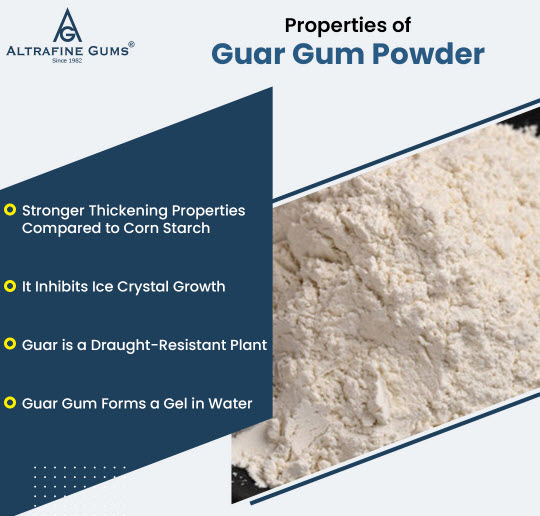
Where to Buy Guar Gum Powder?
Guar gum powder is readily available at most health food stores and online retailers. It’s a cost-effective ingredient that can be stored for extended periods without losing its effectiveness.
Conclusion: Embracing Guar Gum in Vegan and Plant-Based Diets
In conclusion, guar gum powder is a versatile and valuable addition to the toolkit of anyone following a vegan or plant-based diet. It enhances texture, acts as a thickening agent, and contributes to the creaminess of a wide range of dishes, from savory to sweet. While using guar gum, it’s essential to be mindful of the recommended dosage and potential side effects. Additionally, it’s important to consider individual preferences and recipe requirements when choosing between guar gum and other thickeners like xanthan gum. As you explore the world of vegan and plant-based cooking, don’t hesitate to harness the power of guar gum to elevate your culinary creations.
FAQs – Guar Gum
1. Is guar gum safe for consumption in vegan diets?
Yes, guar gum is generally safe when used in moderation. However, some individuals may experience digestive discomfort with excessive consumption.
2. Can guar gum be used in gluten-free baking?
Absolutely! Guar gum is a valuable ingredient in gluten-free baking, providing elasticity and structure to baked goods.
3. Where can I purchase guar gum powder?
You can find guar gum powder at most health food stores and online retailers. It's a cost-effective and long-lasting ingredient.
4. What's the difference between guar gum and xanthan gum?
Guar gum is a natural thickening agent derived from guar beans, while xanthan gum is produced through fermentation. The choice between the two depends on personal preference and recipe requirements.
5. How much guar gum should I use in my recipes?
The recommended dosage of guar gum varies by recipe, but typically, a quarter to a half teaspoon per serving is sufficient. It's essential to follow the recipe instructions and adjust as needed.



